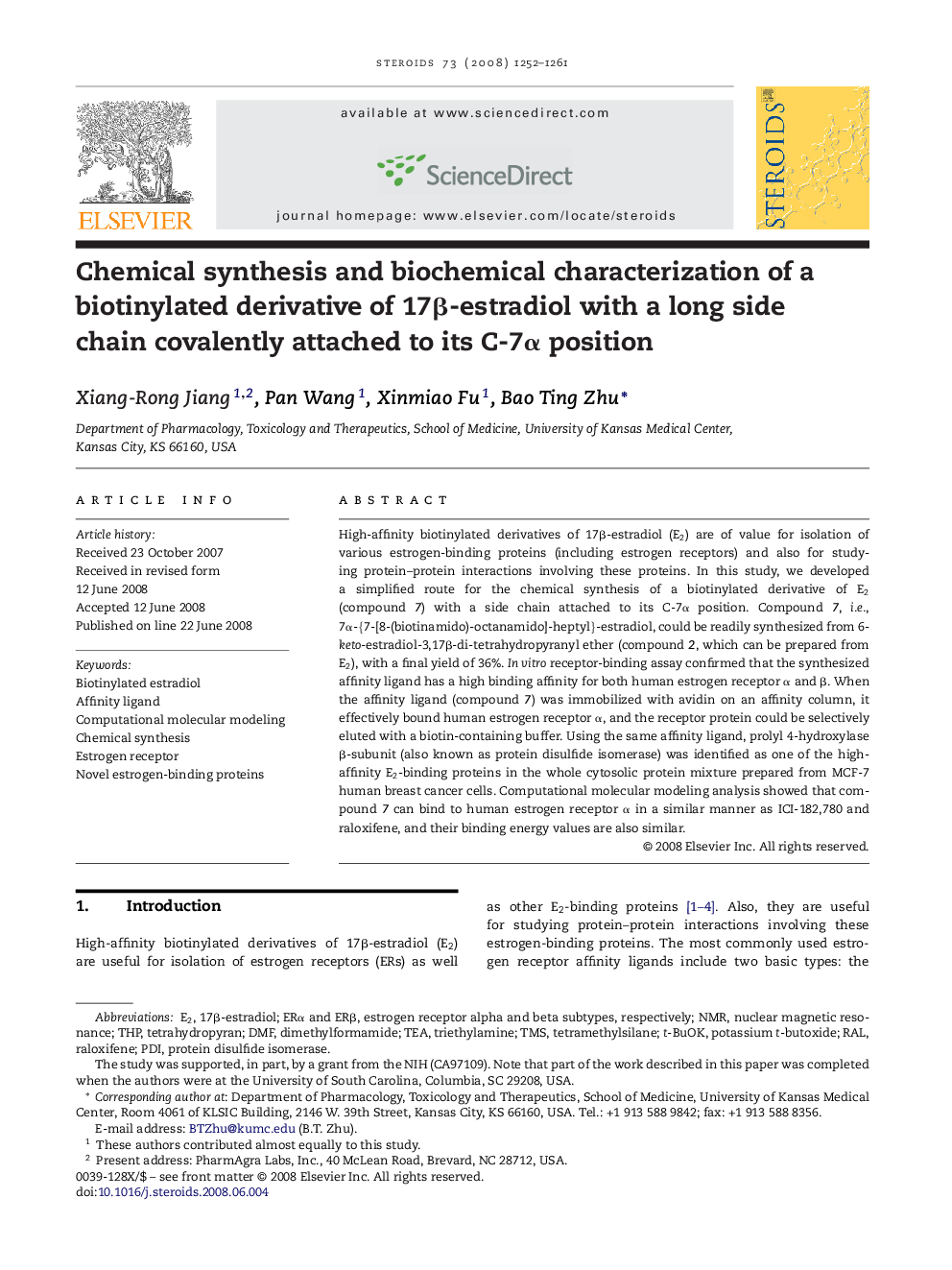| Article ID | Journal | Published Year | Pages | File Type |
|---|---|---|---|---|
| 2028533 | Steroids | 2008 | 10 Pages |
High-affinity biotinylated derivatives of 17β-estradiol (E2) are of value for isolation of various estrogen-binding proteins (including estrogen receptors) and also for studying protein–protein interactions involving these proteins. In this study, we developed a simplified route for the chemical synthesis of a biotinylated derivative of E2 (compound 7) with a side chain attached to its C-7α position. Compound 7, i.e., 7α-{7-[8-(biotinamido)-octanamido]-heptyl}-estradiol, could be readily synthesized from 6-keto-estradiol-3,17β-di-tetrahydropyranyl ether (compound 2, which can be prepared from E2), with a final yield of 36%. In vitro receptor-binding assay confirmed that the synthesized affinity ligand has a high binding affinity for both human estrogen receptor α and β. When the affinity ligand (compound 7) was immobilized with avidin on an affinity column, it effectively bound human estrogen receptor α, and the receptor protein could be selectively eluted with a biotin-containing buffer. Using the same affinity ligand, prolyl 4-hydroxylase β-subunit (also known as protein disulfide isomerase) was identified as one of the high-affinity E2-binding proteins in the whole cytosolic protein mixture prepared from MCF-7 human breast cancer cells. Computational molecular modeling analysis showed that compound 7 can bind to human estrogen receptor α in a similar manner as ICI-182,780 and raloxifene, and their binding energy values are also similar.
